There’s nothing better than a bowl of warm, comforting soup on a cold day.
But if you really want to take your soup to the next level, adding pasta is a must.
Not only will it give your soup an extra boost of flavor and texture, but it will also make it more filling and satisfying.
The key is finding the right kind of pasta for each type of soup.
Here are 10 of the best pastas for making soups that everyone will love!
Why Use Pasta In Soup?

Pasta is a great addition to soup because it adds texture, flavor, and heartiness.
It also helps to thicken the broth of the soup.
The type of pasta you use will depend on the type of soup you are making; for example, small shapes like ditalini or macaroni work well in minestrone and other vegetable-based soups, while larger shapes like fusilli or shells are better suited for creamier soups.
When adding pasta to your soup, it’s important to remember that it will continue cooking even after being added to the pot.
To avoid overcooking your pasta, add it towards the end of cooking time so that it has just enough time to absorb some of the flavors from the broth without becoming mushy.
You can also cook your pasta separately and then add it at serving time if desired.
Pasta is an easy way to make any soup more filling and satisfying – plus, who doesn’t love a bowl full of comforting carbs?
The 10 Best Pasta for Soup
Pasta can be a great addition to soup.
It adds texture and flavor, creating a comforting meal.
However, choosing the right type of pasta is essential for making sure your soup turns out just right.
Here are ten types of pasta that are perfect for soups, each offering an ideal combination of flavor and texture:
1. Acini di Pepe

Acini di Pepe is a type of small, round pasta that translates to ‘peppercorns’ in Italian.
The tiny pasta is often used in soups and salads, as well as side dishes.
It has a mild flavor and soft texture that makes it an ideal addition to many dishes.
Acini di pepe can be added to soups for extra texture and flavor.
They are especially good in minestrone soup or any other vegetable-based soup.
Acini di pepe also works well in cold salads with vegetables, cheese, and dressing.
For a simple side dish, try boiling the acini di pepe until al dente and then tossing them with butter or olive oil, garlic, herbs, and Parmesan cheese.
Pro Tip: When cooking acini di pepe for soups or salads make sure not to overcook them!
If they become too soft they will lose their shape and won’t add much texture to your dish.
2. Alphabet Pasta
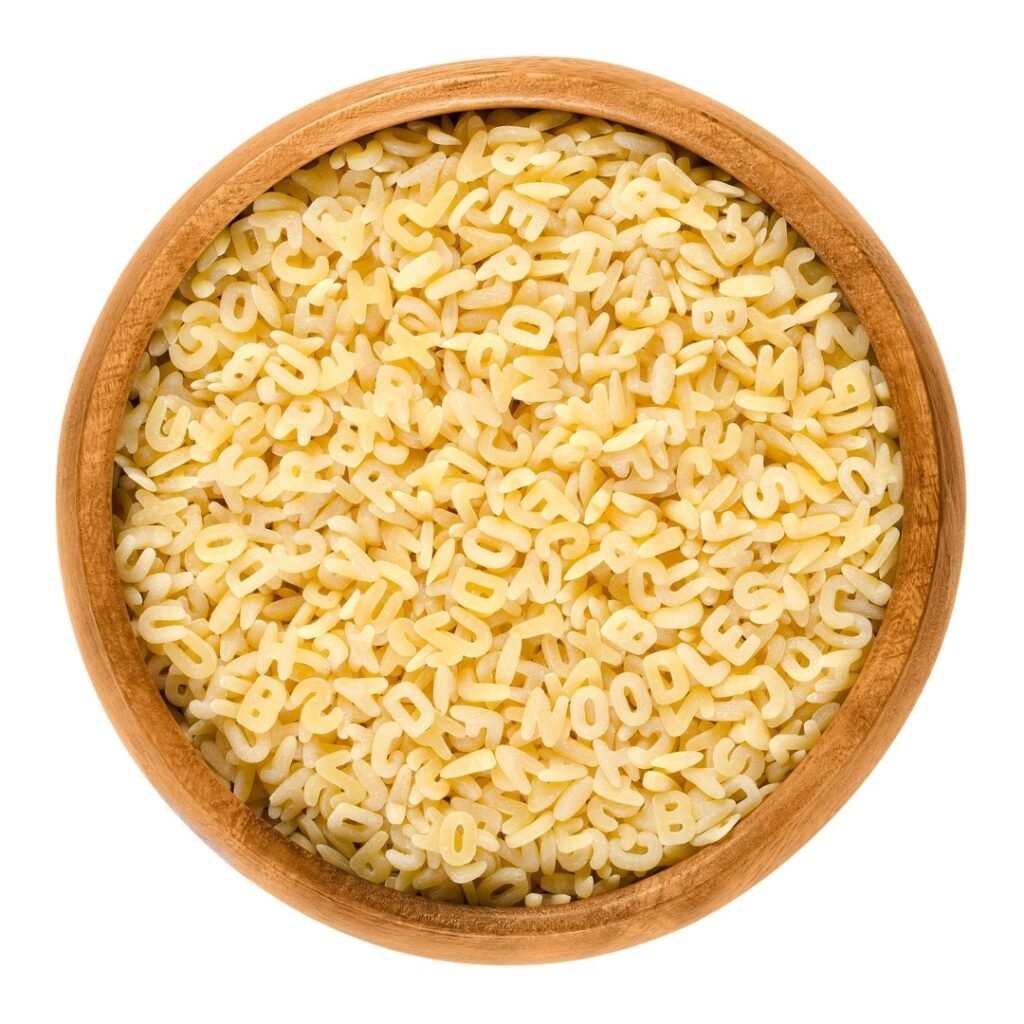
Alphabet pasta is a type of small, bite-sized pasta shaped like letters of the alphabet.
It’s often used in soups and salads, but can also be used as an ingredient in other dishes.
Alphabet pasta is usually made from durum wheat semolina flour and water, although some brands may include egg or other ingredients.
Alphabet pasta adds a fun touch to any soup!
The tiny letter shapes make it perfect for kids’ meals, but adults will love it too.
Try adding alphabet pasta to your favorite vegetable soup recipe for added texture and flavor.
Fun Tip: Use alphabet pasta to spell out words or messages in your soup! This makes for a fun presentation that everyone will enjoy!
3. Ditalini

Ditalini is a type of small pasta shaped like short tubes.
It is commonly used in soups and salads, as well as baked dishes.
The name comes from the Italian word for “thimble,” which describes its shape perfectly.
Ditalini adds texture to soup, making it more interesting and filling.
It’s also great for absorbing flavors from the broth or other ingredients in the soup.
Try adding ditalini to your favorite vegetable or chicken soup recipe for an extra boost of flavor and texture!
Fun Tip: Ditalini can also be used to make macaroni and cheese!
Just cook up some ditalini according to package instructions, mix with your favorite cheese sauce, top with breadcrumbs and bake until golden brown!
4. Fregola
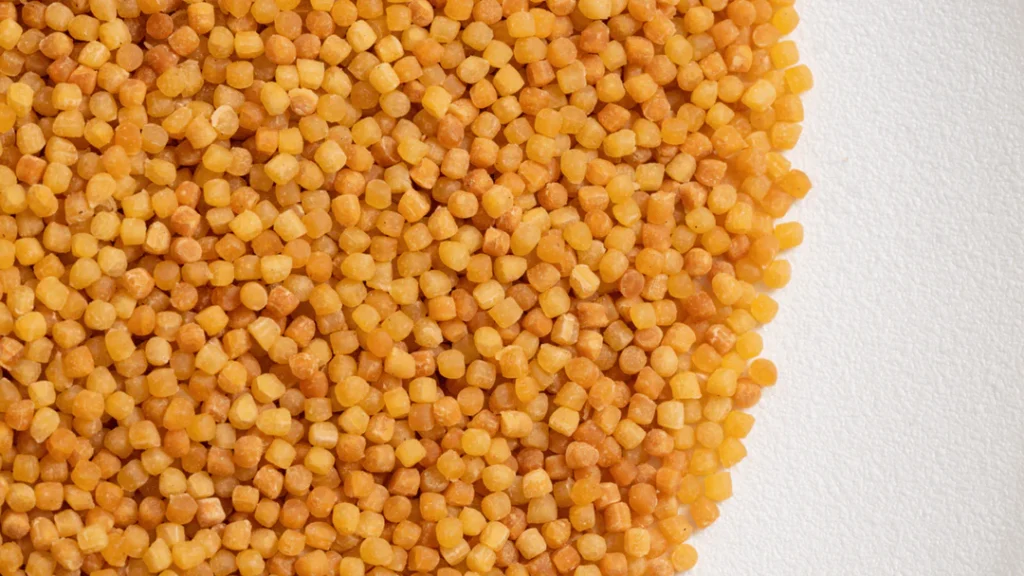
Fregola is a type of pasta from Sardinia, Italy.
It is made from semolina flour and water, and is formed into small pellets that are toasted in the oven.
Fregola has a nutty flavor and chewy texture that makes it perfect for soups or salads.
Fregola can be used as an alternative to rice or other grains in soups and stews.
It adds a unique flavor and texture to any dish, making it stand out from traditional soup recipes.
Plus, fregola cooks quickly so you don’t have to wait long before enjoying your meal!
Tip: To make fregola even more flavorful, try adding some fresh herbs like rosemary or thyme when cooking it. This will give your soup an extra boost of flavor!
5. Orzo

Orzo is a type of pasta shaped like rice grains. It’s also known as risoni, which means ‘big rice’ in Italian.
Orzo is made from durum wheat semolina and can be used in soups, salads, side dishes and main courses.
Orzo has a nutty flavor that pairs well with many different ingredients.
Try adding it to your favorite soup recipes for an extra boost of flavor and texture!
Orzo cooks quickly, so it’s perfect for weeknight meals when you don’t have much time to prepare dinner.
Tip: To make the most flavorful orzo soup ever, try cooking the orzo separately before adding it to the soup pot! This will help keep the orzo from becoming mushy and give it a nice al dente texture.
6. Orecchiette
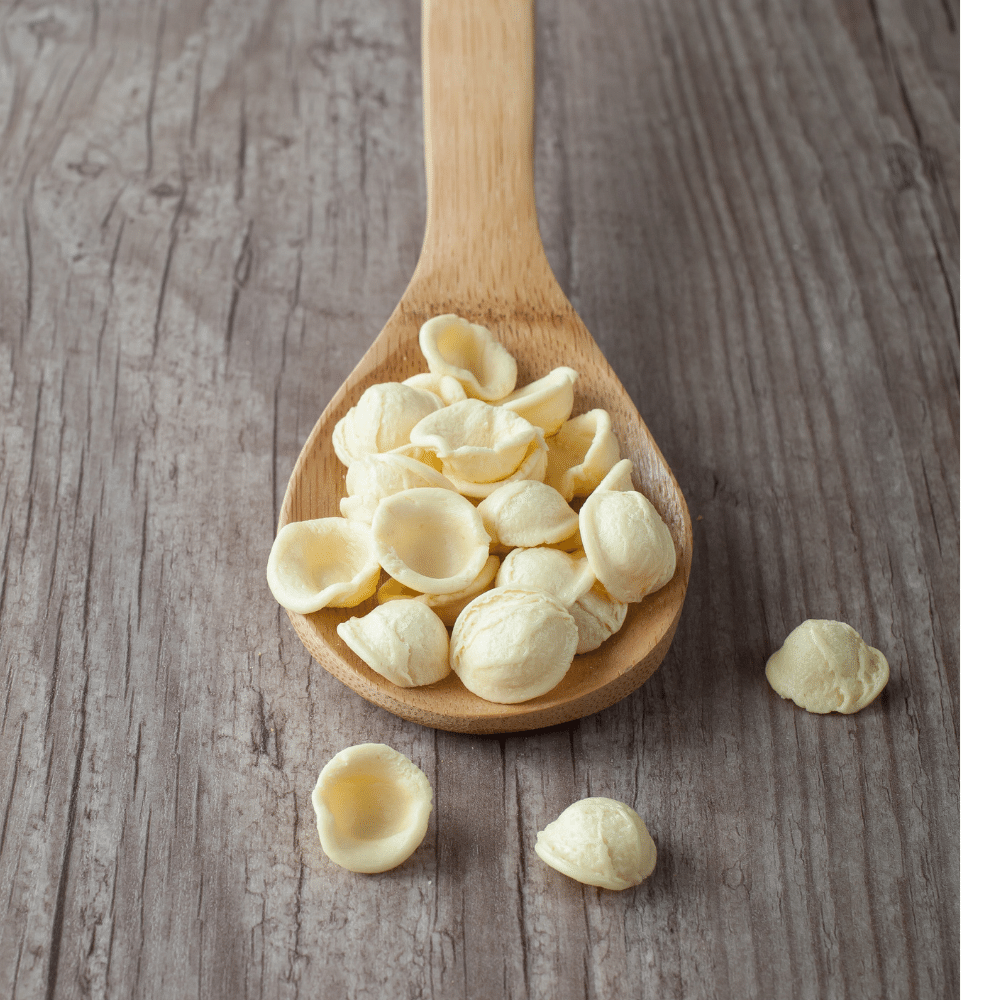
Orecchiette is a type of pasta from the Apulia region in Southern Italy.
It is shaped like small ears, hence its name which translates to ‘little ears’ in Italian.
Orecchiette are usually served with vegetables, cheese, and meat sauces.
Orecchiette has a unique shape that helps it hold onto sauce better than other types of pasta.
The ridges on the surface also help to trap bits of vegetables or meat for an extra flavorful bite! Orecchiette can be used in soups as well as traditional pasta dishes.
Tip: To make orecchiette even more delicious, try roasting them before adding them to your soup!
Simply toss the orecchiette with olive oil and salt and bake at 400°F (200°C) for 10-15 minutes until golden brown and crispy.
This will add a nice crunchy texture to your soup!
7. Rotini

Rotini is a type of pasta that is shaped like a corkscrew or helix.
It is usually made from durum wheat flour and water, but can also be made with other types of flour such as semolina or whole wheat.
Rotini has a slightly chewy texture and holds its shape well when cooked, making it an ideal choice for soups, salads, casseroles, and stir-fries.
Rotini adds flavor to soup by absorbing the broth while still maintaining its shape.
The ridges on the rotini help to hold onto chunks of vegetables or meat in the soup for added texture and flavor.
Plus, it’s fun to eat!
Tip: To make your soup even more flavorful, try adding some freshly grated Parmesan cheese just before serving!
8. Shells
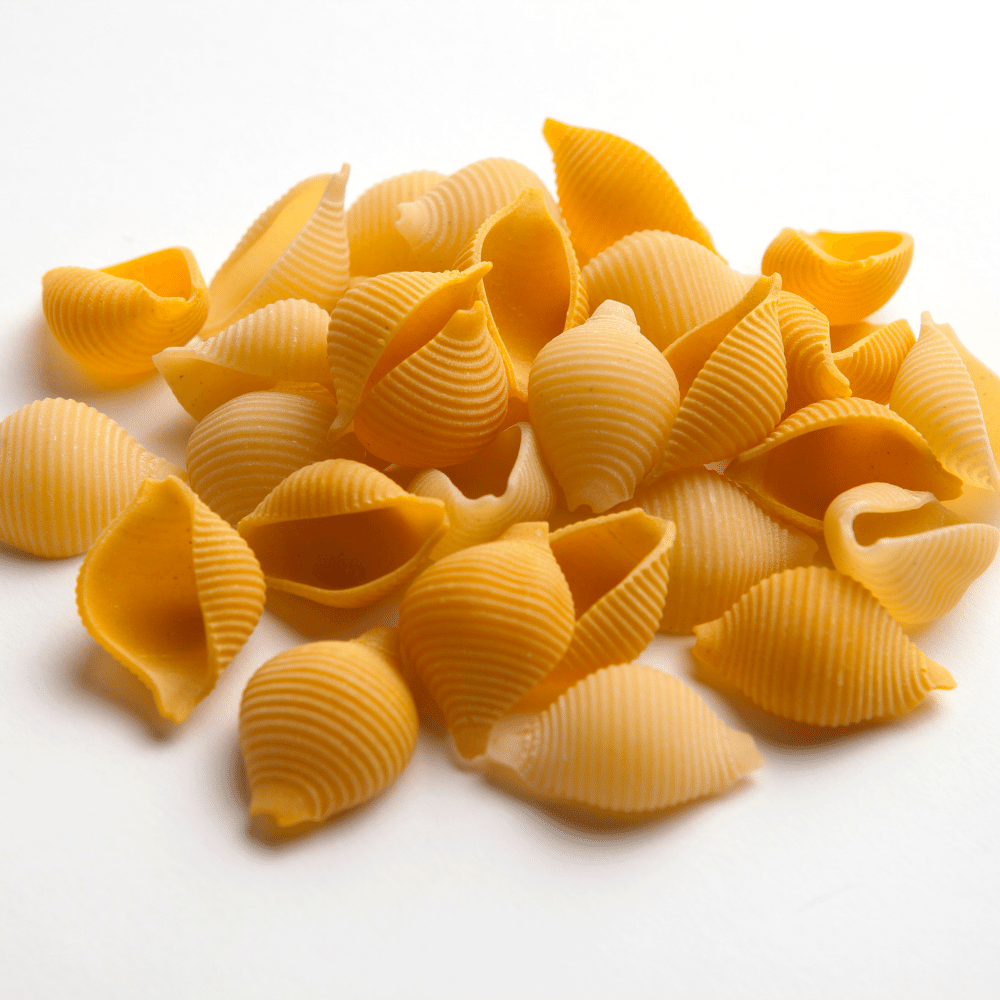
Shells are a type of pasta that is shaped like a shell.
They come in various sizes, from small shells to large ones.
Shells can be used in soups, salads, casseroles and other dishes.
Shells are great for soup because they hold their shape when cooked and absorb the flavors of the broth or sauce they’re cooked in.
They also provide a nice texture contrast with vegetables or meat chunks that may be added to the soup.
9. Tubetti
Tubetti is a type of small, tubular pasta that is commonly used in Italian cuisine.
It is usually made from durum wheat semolina and comes in various shapes and sizes.
Tubetti can be served as part of a soup or stew, tossed with vegetables or cheese, or even added to salads for extra texture.
Tubetti has a slightly chewy texture and absorbs the flavors of whatever sauce it’s cooked with.
Its small size makes it ideal for soups because it cooks quickly and adds just enough bulk to make the soup more filling without overpowering the other ingredients.
10. Rotelle
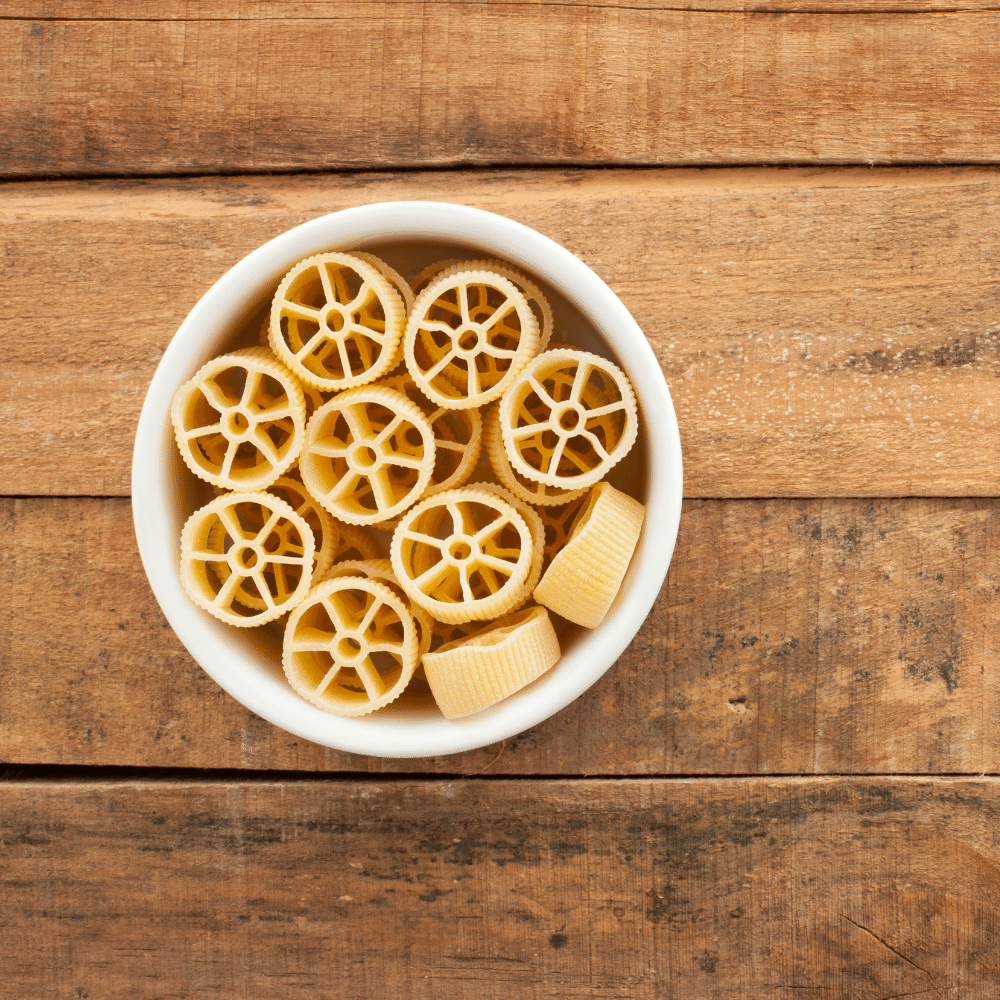
Rotelle, also known as wagon wheel pasta, is a type of shaped pasta that resembles a wheel with spokes.
It’s usually made from durum wheat semolina and comes in various sizes.
Rotelle is often used in soups, salads, and casseroles because it holds its shape well when cooked.
Rotelle adds texture to soup dishes like minestrone or Italian wedding soup.
The ridges on the wheels help them hold onto sauces and other ingredients better than other types of pasta shapes.
They also look great when served as part of an entrée or side dish!
Fun Tip: To make your rotelle stand out even more, try adding some colorful vegetables like carrots or bell peppers to your soup! This will give it a vibrant pop of color that will really bring out the flavor of the rotelle.
FAQ
What type of pasta is good for soups?
When it comes to soups, there are a variety of pasta shapes that work well. For broths, small shapes such as Risoni, Ditalini lisci, and Stelline (shaped like tiny stars) are ideal. These shapes are small enough to not overpower the soup, but still provide a nice texture.
For heartier soups such as minestrone, larger shapes such as maccheroni, ditaloni rigati, or ditaloni lisci are better suited.
These shapes are more substantial and can hold up to the heavier ingredients in the soup. No matter what type of soup you are making, there is a pasta shape that will work perfectly.
How do you keep pasta from getting mushy in soup?
To keep pasta from getting mushy in soup, it’s important to add the noodles at the very end of the cooking process.
Wait until the soup is almost finished cooking, then add the noodles and simmer for a few minutes until they are about halfway cooked. This will ensure that the noodles don’t overcook and become mushy.
Additionally, you can reduce the amount of liquid in the soup to prevent the noodles from becoming too soft. If you’re using a thicker broth, you may also want to reduce the cooking time for the noodles.
Finally, stirring the soup occasionally while the noodles are cooking will help to evenly distribute the heat and prevent them from sticking together.
What is the small pasta for soup called?
The small pasta often used in soups is called orzo (also known as risoni). This type of pasta is part of a larger group of very small pasta shapes known as ‘pastina’ in Italian.
Orzo is most commonly used in broths and minestrone soups, as its small size allows it to cook quickly and absorb the flavors of the soup. It is not usually used in creamed or pureed soups, as its texture can become mushy when cooked for too long.
What kind of noodles are used in chicken soup?
The type of noodles used in chicken soup can vary depending on the recipe. Common types of noodles used in chicken soup include egg noodles, ramen noodles, and small pasta shapes such as ditalini or orzo. Some recipes may also call for rice noodles or other types of noodles.
Read Also: The 14 Best Noodles for Chicken Noodle Soup
Conclusion
In conclusion, there are many types of pasta that can be used to make delicious soups.
The best pastas for soup are Acini di Pepe, Alphabet, Ditalini, Fregola, Orzo, Orecchiette, Rotini, Shells, Tubetti, and Wagon Wheels. Each of these pastas has its own unique shape and texture, and can be used to create a variety of delicious soups.
Using the right type of pasta can make all the difference in a soup, so it’s important to choose the right one for your dish.

The 10 Best Pasta for Soup
Ingredients
- Acini di Pepe
- Alphabet Pasta
- Ditalini
- Fregola
- Orzo
- Orecchiette
- Rotini
- Shells
- Tubetti
- Wagon Wheels
Instructions
- Pick your favorite kind of pasta from this list to add to your soup.
- Enjoy your meal in no time!
Jenny has always been passionate about cooking, and she uses her platform to share her joy of food with others. Her recipes are easy to follow, and she loves giving tips and tricks to help others create their own unique culinary creations.

